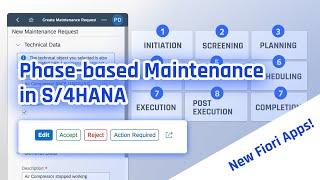
Boost Your Google AdSense RPM & Revenue: Proven Strategies to Maximize Earnings!
Welcome to Optimize & Monetize!
In this video, we provide actionable strategies to boost your Google AdSense RPM (Revenue per Thousand Impressions) and overall website revenue. Whether you're an experienced publisher or just getting started, these tips will help you maximize your AdSense earnings. You’ll learn how to improve ad placement, optimize your website for speed, use high-converting ad formats, and leverage Google Analytics for performance tracking. Let’s dive in!
Why AdSense RPM is Key for Success
Understanding AdSense RPM is crucial because it shows how much you earn per 1,000 page views. Optimizing this metric helps increase your revenue without additional traffic, maximizing your earnings from existing users. This video offers step-by-step methods for boosting RPM, improving user experience, and increasing ad revenue through AdSense optimization.
Key Strategies to Increase Google AdSense RPM
We cover several crucial strategies, including:
1. Ad Placement Optimization
The right ad placement is key to increasing your AdSense RPM. We explore how to strategically place ads where users are most likely to click. You’ll learn:
Placing ads above the fold.
Inserting ads within content.
Testing ad sizes and formats for maximum performance.
By using these tactics, you’ll improve your click-through rate (CTR), leading to better ad performance and more revenue.
2. Improving Website Speed and Performance
A fast website not only enhances user experience but also boosts AdSense RPM. Slow sites result in fewer impressions, so speeding up your site can directly increase your earnings. We’ll show you how to:
Use Google PageSpeed Insights to diagnose and fix speed issues.
Implement Content Delivery Networks (CDNs) for faster load times.
Optimize images and code to reduce page load times.
These methods will help retain visitors, increase page views, and enhance your overall AdSense revenue.
3. Using High-Converting Ad Formats
Choosing the right ad format can make a big difference in your AdSense RPM. We explore several high-converting formats such as:
Responsive ads that fit any screen size.
In-feed ads that blend with your content.
Auto Ads, which automatically optimize placement and format based on user behavior.
Testing and experimenting with these formats will allow you to find the best combinations to boost your earnings.
4. Leveraging Google Analytics for Performance Tracking
Google Analytics is essential for tracking ad performance and understanding user behavior. In this section, we explain how to:
Set up Google Analytics to monitor ad performance.
Track which pages drive the most revenue.
Identify which traffic sources are most valuable.
Using Google Analytics data helps you make informed decisions about optimizing AdSense for better performance and revenue growth.
5. Creating Engaging Content for Better User Experience
High-quality content keeps visitors engaged, leading to longer sessions and more page views. This translates to more ad impressions and higher RPM. We discuss content strategies such as:
Structuring your articles for better readability.
Offering valuable information that attracts and retains visitors.
Engaging content plays a direct role in increasing AdSense RPM and overall website monetization.
Advanced Tips for Boosting AdSense Earnings
For those looking to take AdSense optimization to the next level, we share advanced strategies like:
Heatmaps to understand where users click the most.
A/B testing different ad placements and formats.
Using AdSense experiments to test new ideas without risking revenue.
These methods help you refine your approach, ensuring continuous growth in earnings.
The Connection Between Web Growth and Monetization
Growth and monetization go hand-in-hand. As your website traffic increases, so does your potential for revenue. But simply growing traffic isn’t enough—you need to optimize your site for AdSense monetization to fully capitalize on the growth. This video emphasizes the balance between traffic generation and monetization strategies for sustainable success.
Summary of Key Points
Here’s a quick recap of what you’ll learn:
Optimize ad placement for better visibility and higher CTR.
Improve website speed for more ad impressions.
Use high-converting ad formats to increase engagement.
Leverage Google Analytics for data-driven decisions.
Create engaging content for better user retention.
Apply advanced techniques like heatmaps and A/B testing to refine your strategy.
By following these strategies, you’ll see an increase in your AdSense RPM and overall website revenue.
Stay Tuned for More Monetization Tips!
If you found this video helpful, don’t forget to like, subscribe, and hit the notification bell for more expert tips on web growth and monetization. At Optimize & Monetize, we’re committed to helping you succeed in the world of digital marketing and website monetization.
In this video, we provide actionable strategies to boost your Google AdSense RPM (Revenue per Thousand Impressions) and overall website revenue. Whether you're an experienced publisher or just getting started, these tips will help you maximize your AdSense earnings. You’ll learn how to improve ad placement, optimize your website for speed, use high-converting ad formats, and leverage Google Analytics for performance tracking. Let’s dive in!
Why AdSense RPM is Key for Success
Understanding AdSense RPM is crucial because it shows how much you earn per 1,000 page views. Optimizing this metric helps increase your revenue without additional traffic, maximizing your earnings from existing users. This video offers step-by-step methods for boosting RPM, improving user experience, and increasing ad revenue through AdSense optimization.
Key Strategies to Increase Google AdSense RPM
We cover several crucial strategies, including:
1. Ad Placement Optimization
The right ad placement is key to increasing your AdSense RPM. We explore how to strategically place ads where users are most likely to click. You’ll learn:
Placing ads above the fold.
Inserting ads within content.
Testing ad sizes and formats for maximum performance.
By using these tactics, you’ll improve your click-through rate (CTR), leading to better ad performance and more revenue.
2. Improving Website Speed and Performance
A fast website not only enhances user experience but also boosts AdSense RPM. Slow sites result in fewer impressions, so speeding up your site can directly increase your earnings. We’ll show you how to:
Use Google PageSpeed Insights to diagnose and fix speed issues.
Implement Content Delivery Networks (CDNs) for faster load times.
Optimize images and code to reduce page load times.
These methods will help retain visitors, increase page views, and enhance your overall AdSense revenue.
3. Using High-Converting Ad Formats
Choosing the right ad format can make a big difference in your AdSense RPM. We explore several high-converting formats such as:
Responsive ads that fit any screen size.
In-feed ads that blend with your content.
Auto Ads, which automatically optimize placement and format based on user behavior.
Testing and experimenting with these formats will allow you to find the best combinations to boost your earnings.
4. Leveraging Google Analytics for Performance Tracking
Google Analytics is essential for tracking ad performance and understanding user behavior. In this section, we explain how to:
Set up Google Analytics to monitor ad performance.
Track which pages drive the most revenue.
Identify which traffic sources are most valuable.
Using Google Analytics data helps you make informed decisions about optimizing AdSense for better performance and revenue growth.
5. Creating Engaging Content for Better User Experience
High-quality content keeps visitors engaged, leading to longer sessions and more page views. This translates to more ad impressions and higher RPM. We discuss content strategies such as:
Structuring your articles for better readability.
Offering valuable information that attracts and retains visitors.
Engaging content plays a direct role in increasing AdSense RPM and overall website monetization.
Advanced Tips for Boosting AdSense Earnings
For those looking to take AdSense optimization to the next level, we share advanced strategies like:
Heatmaps to understand where users click the most.
A/B testing different ad placements and formats.
Using AdSense experiments to test new ideas without risking revenue.
These methods help you refine your approach, ensuring continuous growth in earnings.
The Connection Between Web Growth and Monetization
Growth and monetization go hand-in-hand. As your website traffic increases, so does your potential for revenue. But simply growing traffic isn’t enough—you need to optimize your site for AdSense monetization to fully capitalize on the growth. This video emphasizes the balance between traffic generation and monetization strategies for sustainable success.
Summary of Key Points
Here’s a quick recap of what you’ll learn:
Optimize ad placement for better visibility and higher CTR.
Improve website speed for more ad impressions.
Use high-converting ad formats to increase engagement.
Leverage Google Analytics for data-driven decisions.
Create engaging content for better user retention.
Apply advanced techniques like heatmaps and A/B testing to refine your strategy.
By following these strategies, you’ll see an increase in your AdSense RPM and overall website revenue.
Stay Tuned for More Monetization Tips!
If you found this video helpful, don’t forget to like, subscribe, and hit the notification bell for more expert tips on web growth and monetization. At Optimize & Monetize, we’re committed to helping you succeed in the world of digital marketing and website monetization.
Комментарии:
Boost Your Google AdSense RPM & Revenue: Proven Strategies to Maximize Earnings!
Optimize & Monetize
Bro Jogan: Joe Rogan interviews Steve Jobs
InkandDreams
Top 10 Tools Of 2021!
Davion Martinez
Soviet Republic - World Maps
Oolykee Gaming
【告白】"みとなつの後継者"冬月DEEP工藤新一の苦悩と挫折/零也も思わず絶句する
如月零也TV\冬月DUO朝ホス最強店舗【ふゆマニ】
YOUTUBE NEW UPDATE
Telugu Tech Office
The multi-trillion female investor
IC Markets Global
드라이버 230까지는 이 동작만 연습해주세요.
최덕규 프로


























